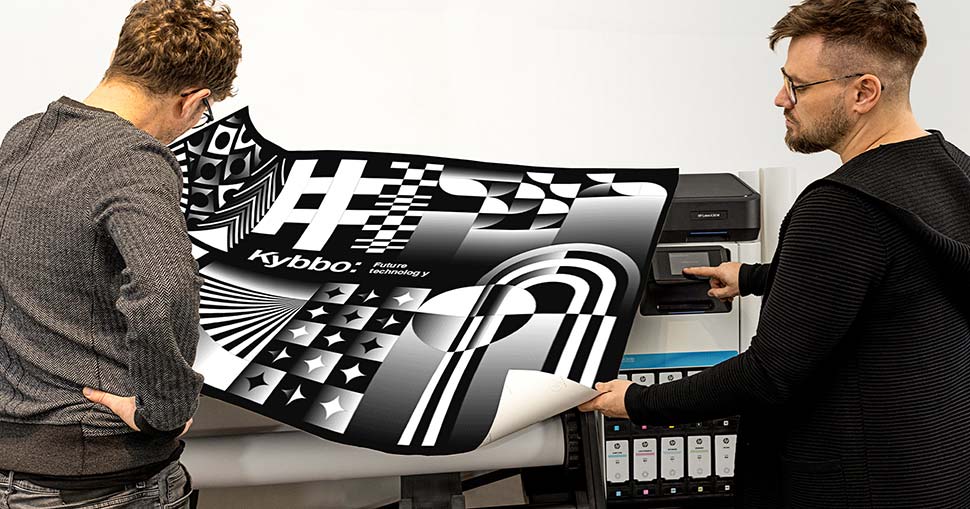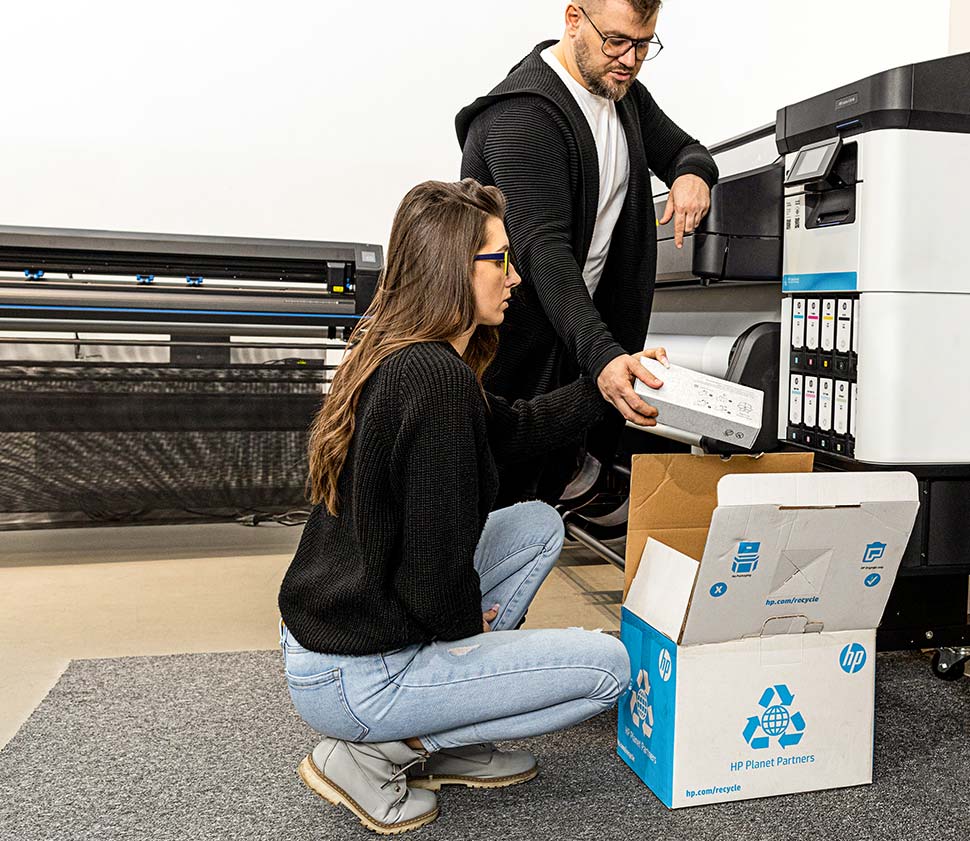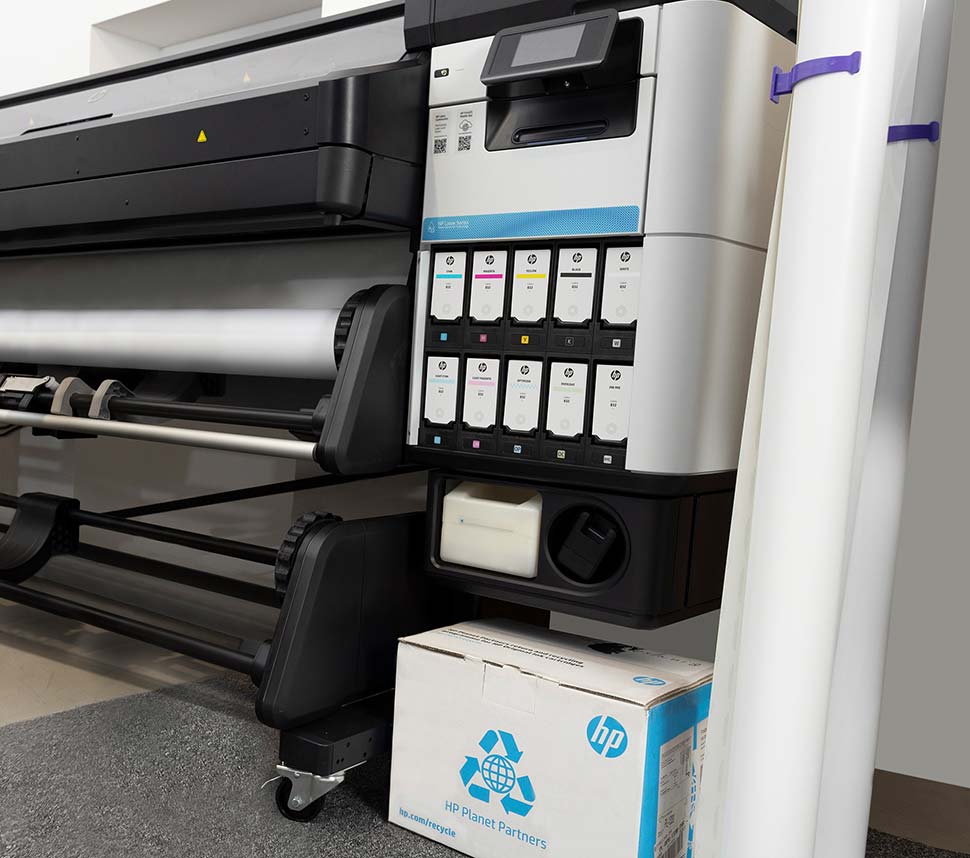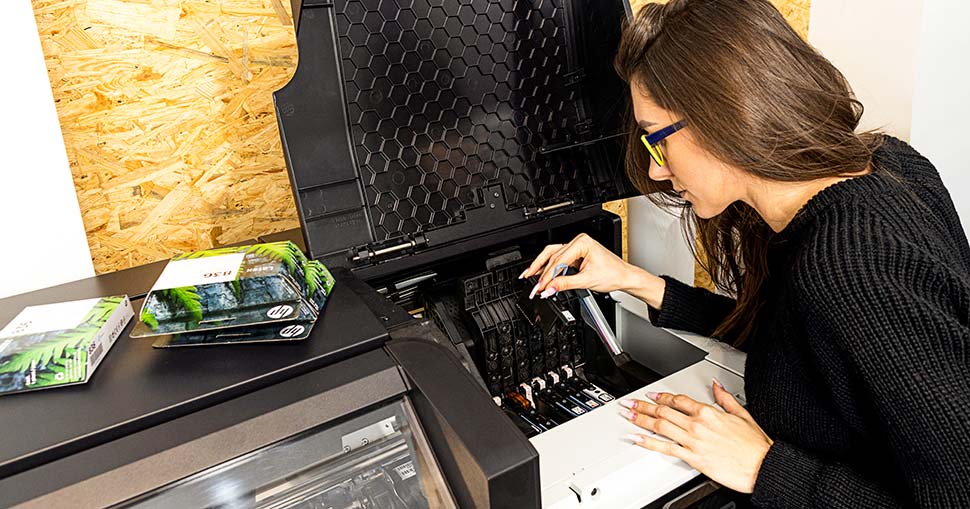LFR takes a closer look at the new HP Latex 630 printer series to find out more about what these latest HP machines offer to users.
As a manufacturer committed to continuously improving its machinery, HP recently announced a new range within its popular HP Latex collection in the entry-level HP Latex 630 printer series.
Launched in the UK at The Print Show 2023 – with simultaneous launches across the globe – visitors were able to catch a glimpse of the new technology in action on the stands of two approved HP distributors in the form of Perfect Colours and Colyer.
The HP Latex 630, HP Latex 630 W, HP Latex 630 Print & Cut Plus, and HP Latex 630 W Print & Cut Plus are all immediately available to the market, while an accompanying HP Print OS Design & eCommerce solution will follow in November. Each machine can print up to 1.63m wide, handle maximum rolls of 42kg, feature 1-litre ink cartridges and boast a standard quality operating speed of 14sq m/hr.
Many will already be familiar with the benefits of working with HP Latex technology, with the machines having been around for a number of years. But what specifically does the HP Latex 630 series offer to users? LFR breaks down some of the stand-out features and advantages of the latest addition to the HP Latex family.

Supporting market entry and development
First off, the HP Latex 630 series is being billed as an affordable entry-level solution, with the basis for its conception being to support those print businesses seeking to upgrade from earlier generation HP Latex 300-series printers. With the new series, they will benefit from the latest developments HP has brought to the market in both the print technology and in the latest Gen 4 HP Latex inks.
Key to these benefits are lower curing temperatures and therefore a broader range of printable media including heat sensitive materials. And, of course, there’s the addition of white ink that HP is rapidly earning a reputation for as the technology leader at this printer price-point, in particular because there is zero waste when it’s not in use.
Another key target customer is anyone making the switch to HP Latex from earlier eco-solvent and solvent print technology, in order to tap in to the increasingly lucrative and rapidly growing demand for more sustainable print. Additionally, they will benefit from instantly ready-to-go printed output – with a white ink option – that does not require a delay for outgassing of solvent fumes.
With the HP Latex 630-series you’ll gain the much-applauded environmental benefits of working with water-based HP Latex inks. These ink products are significantly kinder to the world around us as they have far fewer volatile organic compounds (VOCs) than other ink types such as UV, solvent and eco-solvent.
We believe the HP Latex 630 series will also appeal to businesses new to wide format who may be making their first move into this sector, with plans pushing beyond the production of general wide format print into emerging markets such as exterior decals, interior décor, personalised giftware, and custom white ink concepts and proofs.
These areas offer exciting new profit opportunities for entrepreneurial users and are also examples where the option of Print and Cut adds further creative possibilities.
In such cases, the affordable price point makes the HP Latex 630 an ideal business-in-a-box that could be started in a spare bedroom – an option made ever more practical with the safer and odour-free HP Latex inks. Undoubtedly the existing equity and confidence in the HP brand is paramount to such new users having the confidence to take this first step into wide-format printing.
For any of these customer demographics, each model in the HP Latex 630 range fits these criteria, offering users an affordable, yet high-quality, way of accessing new work and growing their businesses as a result.
As to what sort of typical wide-format work you can expect to produce on the machine, HP Latex 630 printers are capable of creating high-value indoor and outdoor printed work, hitting speeds of up to 18sqm/hr in outdoor mode.
Add in the ability to handle a range of materials – from banners, self-adhesive vinyls and films to papers, wallcoverings, canvas and synthetics – and the world is very much your oyster with these machines.

Winning with white ink
As previously mentioned, the new HP Latex 630 range includes options for white ink. Both the HP Latex 630W and HP Latex 630W Print & Cut Plus run white inks.
To put it simply, HP Latex white ink has established itself as one of the most effective on the market. HP Latex white ink maintains excellent whiteness over time, whereas other white inks used in solvent and UV printing technology have tended to be washed out and lacking in necessary density or have been prone to yellowing over time. In either case, this reduces their viability in usable applications. Importantly, these known issues with competing technologies are something that HP has focused on solving with its Latex white ink alternative.
In addition, the way the HP Latex 630W machines are set up means the user has complete control over how much white ink is applied. This not only means users can be more efficient with their white ink, helping them save on costs, but also achieve high-quality output across all media types.
The inks being used on the HP Latex 630 printer series machines are the fourth generation of HP Latex ink – the result of the ongoing R&D development at HP.
Advantages of working with these ink products on the new machines include the aforementioned lower curing temperatures, which minimise media distortion. Users also benefit from expanded colour space on HP Latex 630 models and a separate anti-scratch cartridge – further increasing the quality and durability of the final print piece.

A flexible solution that supports users
Very much fitting in with the wider HP Latex ethos of providing customers with a solution that is easy to use and flexible in the way that it operates, HP Latex 630 printers have been developed to allow users to achieve the highest quality results with the lowest amount of fuss.
Each machine features 13-amp plug compatibility, allowing users to connect to standard sockets and potentially reduce energy consumption compared to more powerful models. Meanwhile, automatic maintenance and automated printhead cleaning minimises user intervention and saves valuable time, while user-replaceable printheads remove the need to call out specialist tech support.
Stand-out features for flexible production include a spindle-less design, which simplifies the process of switching between different media types, which can often be tricky and take up valuable time.
HP Latex 630 users will also benefit from a front media-loading system that both streamlines and speeds up production. What’s also key here is the smaller footprint that is enabled by this front-loading system. It means users in locations where space is at a premium – such as retail units, copy shops, pop-up shops, design studios and the like – benefit from a machine that pushes back against a wall and happily lives in that space without need for the significant additional walkaround space typically required for rear-loading printers.
Whilst at the front of the HP Latex 630, you’ll also find the control panel which includes on-printer job storage of up to 10GB enabling users to easily store and subsequently reprint previous produced and saved popular jobs.

Affordable and effective
To summarise, the HP Latex 630 printer series offers an affordable solution to those companies keen to try their hand at new markets, access new work and grow their customer base. The machines provide an excellent starting point and a foundation on which users can begin to build up their business.
The natural progression across the HP Latex range of printers means businesses that succeed with the new HP Latex 630 printer series can, if they wish, work their way up the HP Latex ladder from the entry-level machine to higher end models that will allow them to access even more profitable markets.
To find out more about the new HP Latex 630 printer series, join HP for a dedicated webinar event at 10:00 GMT on 27 September. Click here to book your spot at the webinar.






